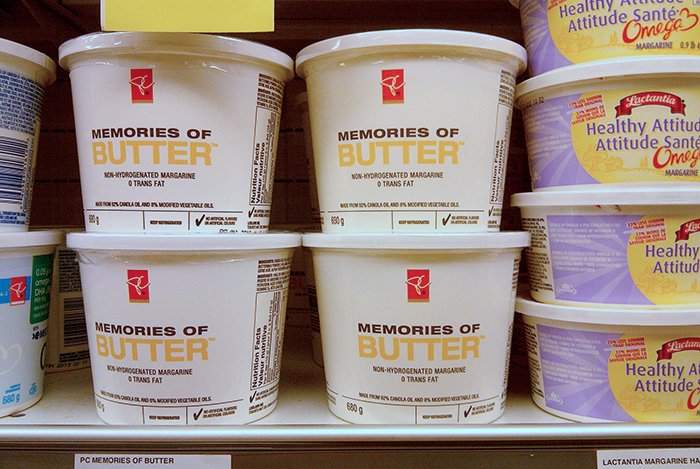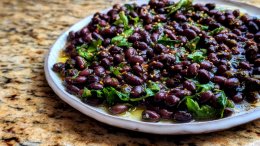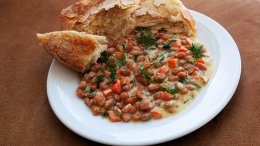We’re more than halfway through January; people are wrapping up their juice cleanses and other detoxes; and New Year’s resolutions are swirling down the toilet. So, what now?
Making drastic, unsustainable and unpalatable changes to your diet is not the only way to healthy eating. If you’ve ever tried using milk instead of cream in a crème brulee, you’ll know exactly what I mean. In fact, you are more likely to stick to your plan by making small adjustments.
Here are some of my favourite ways to make your diet a little healthier without sacrificing taste and pleasure.
Do use low-fat plain yogurt instead of oil or melted butter in baking
If your muffin recipe calls for oil or melted butter, try substituting it 1:1 for low-fat plain yogurt. The yogurt will provide the necessary moisture with fewer calories, as well as a boost of protein and calcium in your baking. You won’t notice the different in taste.
Do eat quinoa instead of rice
Quinoa cooks with the same grain-to-water ratio (1:2) as rice, so if you have a rice cooker at home, you can use the seeming single tasker to cook quinoa! (Just remember to rinse the quinoa very well first to avoid a bitter taste.) Quinoa is known for its protein content, but compared to brown rice, it’s actually quite close (3 g vs. 2.5 g per ½ cup). I think the more impressive fact about quinoa is that it has almost triple the iron and potassium and eight times the folate of brown rice.
Do mash cauliflower instead of potatoes
Cauliflower is gearing up to be one of the year’s trendiest vegetables, but replacing some or all of your mashed potatoes with mashed cauliflower is one of the oldest tricks in the book. A half cup of cooked cauliflower has only 15 calories, while half cup of cooked potato has 72 calories – and that’s before you add any butter or milk! A common misconception is that cauliflower is nutritionally void because it is white, but it is actually a good source of folate, and vitamins C and K. Other delicious cauliflower preparations that are making the rounds are roasted cauliflower, cauliflower “steaks”, cauliflower-crust pizza and cauliflower “bread” sticks.
Do use red lentils in soups and stews
Did you know that red lentils are actually brown or green lentils with the skin removed? They also don’t require soaking or cooking down to mush in order to take on the flavour of what’s around them, so they’re perfect for tossing into soups (especially a pureed one) for extra protein, fibre, iron, phosphorus and potassium. Spilling the Beans co-author Julie van Rosendaal suggests throwing some into your porridge in the morning. Why not?
Don't use margarine instead of butter in icing
In an effort to reduce your consumption of calories and saturated fat, you may be tempted to use tub margarine instead of butter in your buttercream icing. DON’T. You can believe that it’s not butter from the resulting runny mess. Stick margarine is out of the question. It’s loaded in trans fats, which is worse for your heart than saturated fats. The solution is simple: have the real thing. Eat real buttercream, but less of it. If you do want to fiddle around with your buttercream, check out Stephanie Eddy’s article on some delicious (though not necessarily healthy) substitutions.
Don't use artificial sweeteners in place of sugar in baking
Admittedly I am a little biased because I don’t like the taste of artificial sweetener in anything other than chewing gum, but most sweeteners aren’t stable when heated, so your Equal cookies might not be equal to your regular ones in taste or texture. Sugar-free baking also gives the illusion that something is healthier when we all know that sugar isn’t the only “bad-for-you” ingredient in those goodies (think: butter and white flour).
Baked goods should be an occasional food anyway, so it’s better to just leave your favourite recipes alone and enjoy them once in a while. If you really want to cut down on the sugar, most recipes can tolerate having the sugar cut back by a third or half without a significant change in texture or taste.













